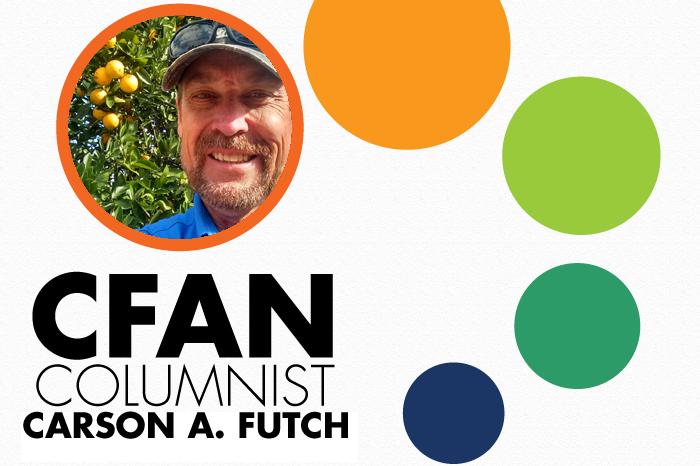THIS MONTH, I would like to pose a question for you to ponder: What is the carbon level in my soil and does it really matter?
All plants and trees are made up of 47 percent carbon and 43 percent oxygen, totaling 90 percent of the dry matter. The largest amount of carbon on the earth is found in the soil. Crop residues do NOT become soil organic matter or soil carbon until it is decomposed by soil microbes. In our porous sandy soils, there is plenty of available oxygen and low levels of naturally occurring microbes due to low levels of available carbon sources for feeding the soil biology.
The addition of a mature composted soil amendment will bring aerobic microbes to the party to decompose crop residues. If not present, the residue will oxidize, resulting in a net loss of carbon. Chemicals and synthetic fertilizers can kill your soil’s microbes and will deplete your soil’s carbon-storage potential, resulting in water and mineral losses. When found in abundance, the microbes will clean up the harmful effects of our past.
Monitoring your soils’ carbon-nitrogen (C:N) ratio is an effective way to combat these losses. Here we are in the lower range of the scale, but as you add mature compost to the topsoil, your soil’s health and biological activity will increase. Most farms run less than 10:1 and need to be at least 16:1 to start reproducing microbes. A healthy soil carbon-to-nitrogen ratio should be 25:1 to 30:1.
So what do you think now? Does the carbon level in the soil really matter?
This column is sponsored by P&H Solutions, Inc.
CREDIT
column by CARSON A. FUTCH
BIO: As the owner of P&H Solutions, Inc., Carson A. Futch assists growers in Central Florida with organically composted soil amendments and other crop-growing products. He is a Plant City native and a fifth-generation Florida cracker who grew up on a working ranch and citrus operation. He received his B.S. in Agriculture from the University of Florida in 1981. During his 34-year career, Carson has been involved in various management and ownership aspects of production agriculture, harvesting, marketing, and agri-tourism. He has also been blessed to serve on various councils and committees for the betterment of his church, community, and the agricultural industry. For more information about Carson and P&H Solutions, Inc., visit www.pandhsolutionsinc.com.

